


How would you like an in depth look at the Abyssinian cat breed profile from an expert?
You've always been attracted to Abyssinian cats and just want to make sure the breed is right for you before finding a kitten.
You have a few questions, maybe even a few concerns . . .
More...
So as a GCCF cat judge and huge fan of Abyssinian's I am sure I can help.
Let me introduce you to the wonderful Abyssinian cat breed.
Introducing Abyssinian Cats
Abyssinians are one of the oldest breeds of cat in existence and still retain their beautiful wild look. Legends tell that this wonderful, ancient breed was born by the riverbanks of the Nile since they look so much like the sacred cats depicted in artefacts from Ancient Egypt.
Their playful, outgoing personalities and their wild appearance ensures that they have remained a popular shorthair breed.



Abyssinian cat
Abyssinian Cat History
How the Abyssinian cat came into existence is shrouded in mystery. One thing is for certain, however, they did not originate from Ethiopia, once called Abyssinia. It is highly likely that this ancient breed of cat originated in Asia, due to records suggesting that cats with ‘ticked’ tabby coats were originally found in India and parts of Southeast Asia.
The breed was recognised in England in 1882 and breeding programs of this beautiful ticked cat began. After the world wars, this breed very nearly died out, but was fortunately saved by dedicated breeders who have ensured that this stunning breed is here to stay.
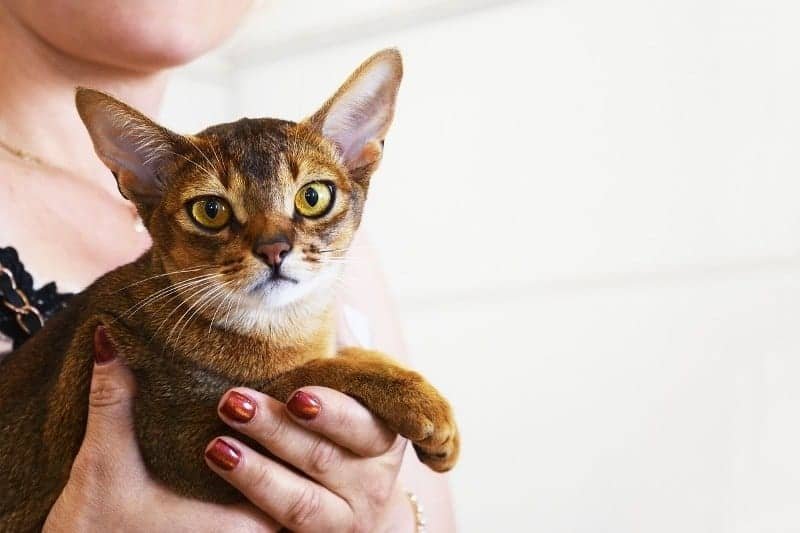


Abyssinian cat
Abyssinian Cat Description
Abyssinians are an elegant, medium sized breed of cat. Abyssinians have a well balanced appearance with no part of them looking out of proportion. They have well muscled bodies and long tails, and look strong and agile. They have a slightly wedge shaped head which should look strong and alert. They have large, broad ears with tufts of fur at the tip completing their wild appearance. They have large, almond shaped eyes which stand out due to the dark, fine line surrounding them.
Abyssinians are a short haired breed of cat, and their coats are thick and dense to the touch. Their coats are ‘ticked’, meaning that each hair is lighter at the bottom and darker on the tip. The belly, throat and inside of their legs is not ticked.
Abyssinians come in a range of colours including dark brown on a paler brown background (Usual), bluish grey on a beige background (Blue), Chocolate brown on a red background (Sorrel), Light Brown on a beige background (Fawn), as well as red and silver. Kittens only develop their ticking when they are around 6 weeks old.
Interesting Abyssinian Cat Fact
Abyssinian cats were one of the first breeds of cats to ever be shown. Placed 3rd at the Crystal Palace Cat Show in 1871.
Personality of Abyssinian Cats
Abyssinians are a very outgoing and active breed of cat. They love to play and can be described as extroverts. Since they are so agile and athletic, Abyssinians need a lot of space so some sort of cat proof garden or yard is a must!
Abyssinian's often become devoted to one person and hate to be left on their own. They are very intelligent, and they will quickly have you trained to do their bidding! This very gentle and affectionate cat needs a lot of human attention. This talkative breed has a very quiet and gentle voice. If you were looking for a quiet lap cat then the Abyssinian is not the breed for you!


GCCF cat judge Ross Davies
Ross Davies
"Often described as the cat with eight legs! The Abyssinian cat is extremely active, talkative, loyal and intelligent."
Grooming & General Care
Abyssinian's are easy to groom and only need a weekly brush to remove dead hair. To keep the coat looking shiny give it a quick wipe over with a chamois leather.
As with all breeds of cat, Abyssinian cats will need regular claw trimmings and dental checks.
Health of Abyssinian Cats
It is possible for all breeds of cat to develop a hereditary problem during their lifetime. One thing to watch out for in Abyssinians is pyruvate kinase deficiency (PKDef). The gene for PKDef is recessive so responsible breeders will test for it, to try to ensure that their kittens are not affected by this disorder.
- PKDef - Pyruvate kinase is a red blood cell enzyme important in red blood cell energy metabolism. If this enzyme is lacking, haemolytic anaemia can result.
- Progressive Retinal Atrophy is present in the Abyssinian gene pool and is thought to cause blindness in later years.
Abyssinian Cat Gallery
Below are some Abyssinian cat pictures, please feel free to contact us if you would like to contribute any photos of your own Abyssinian cats and kittens, we would love to include them!
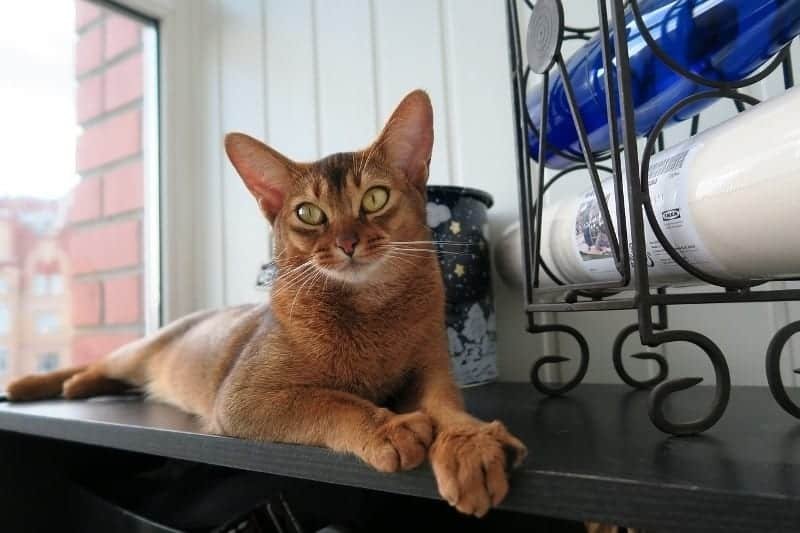

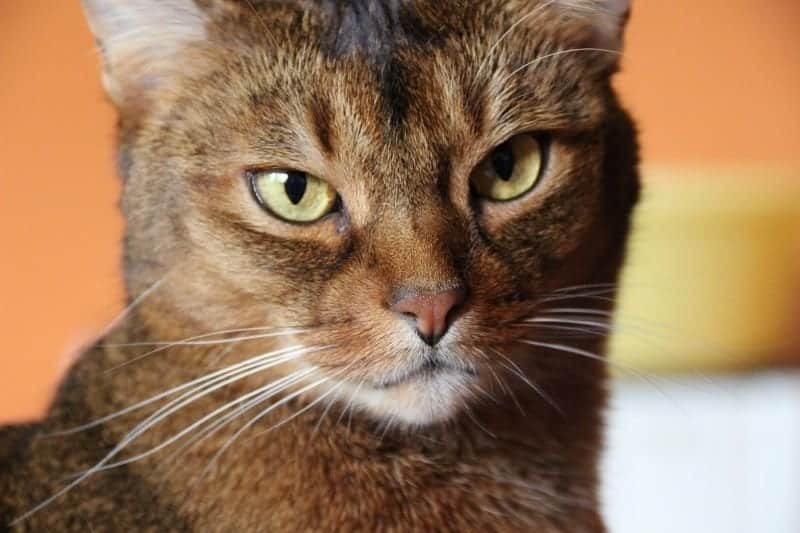
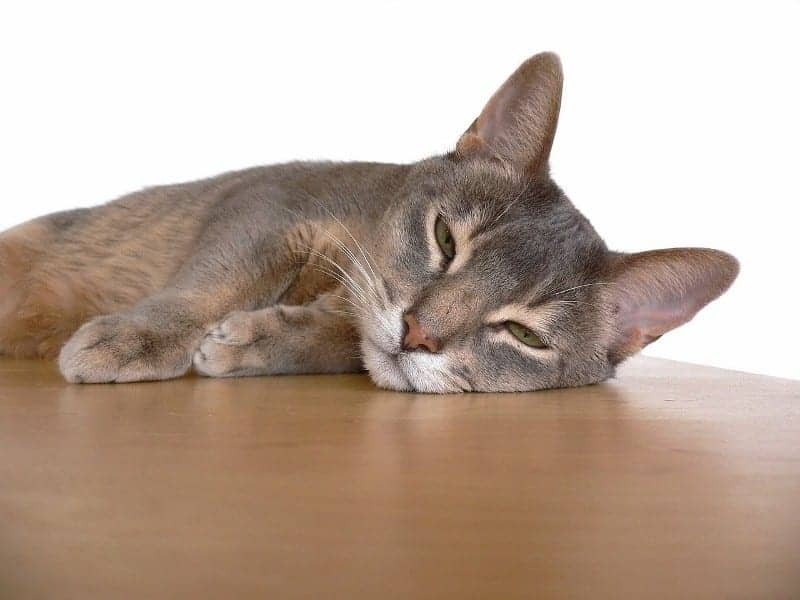
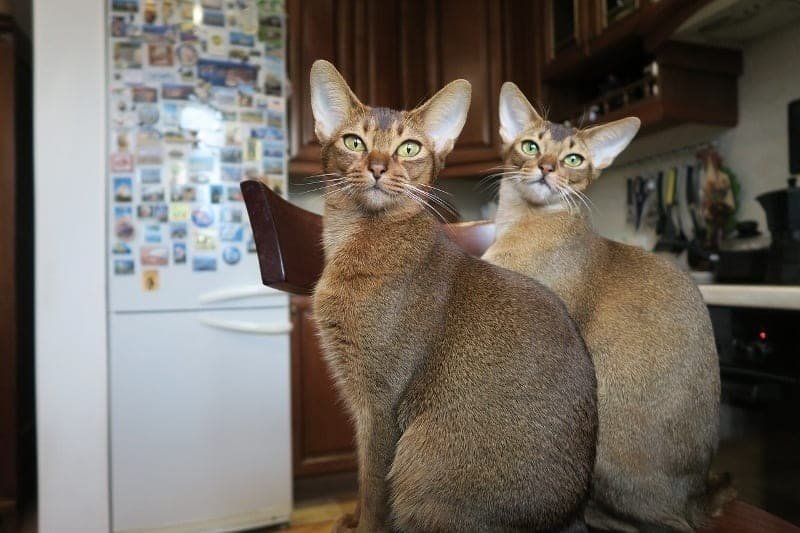




Commonly Asked Questions
Click the questions to reveal the answers...
How long do Abyssinian cats live?
How much grooming do Abyssinian cats require?
Do they get on well with other animals?
Are Abyssinian cats hypoallergenic?
Useful Resources
Here are a few of the most useful resources I am happy to recommend.
